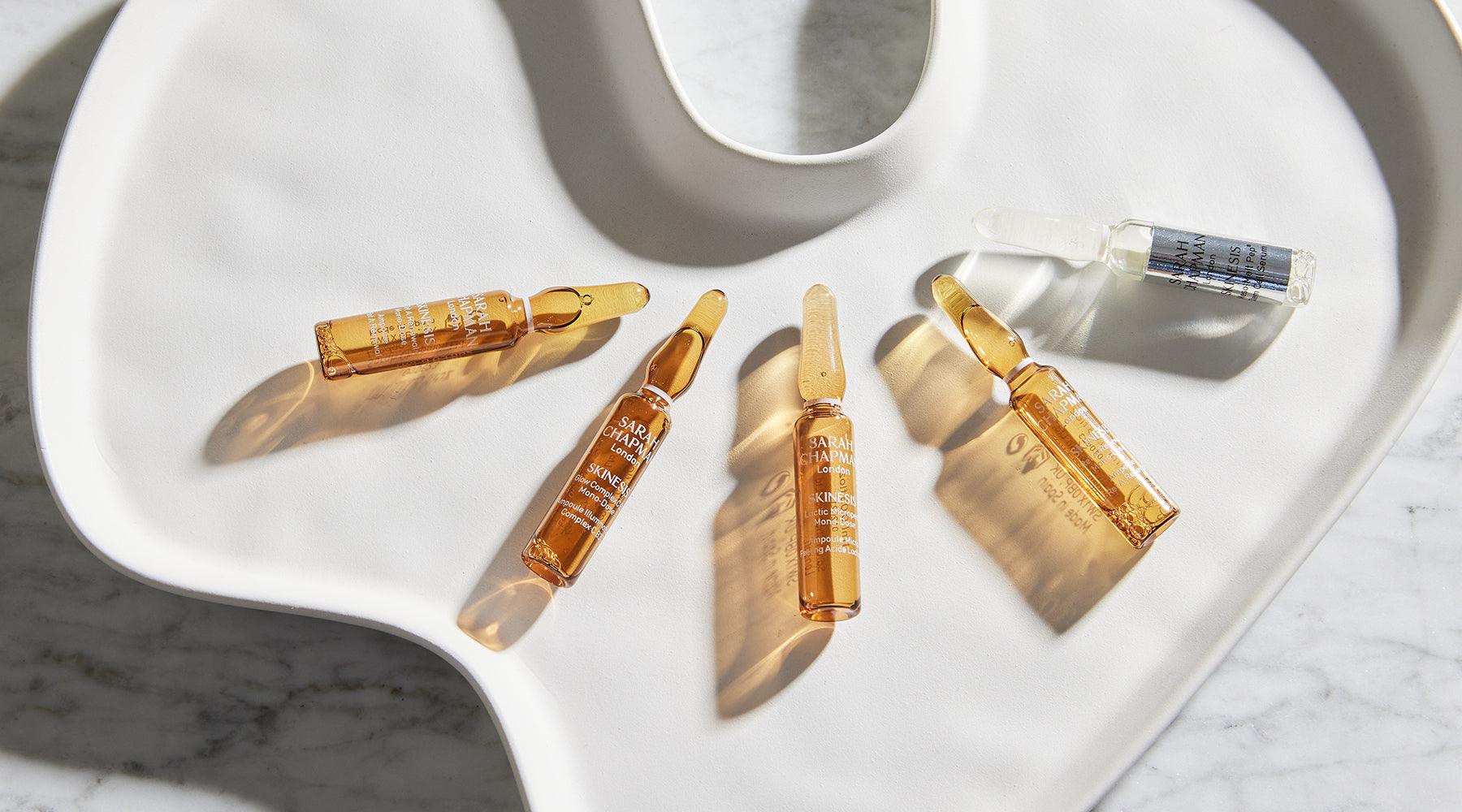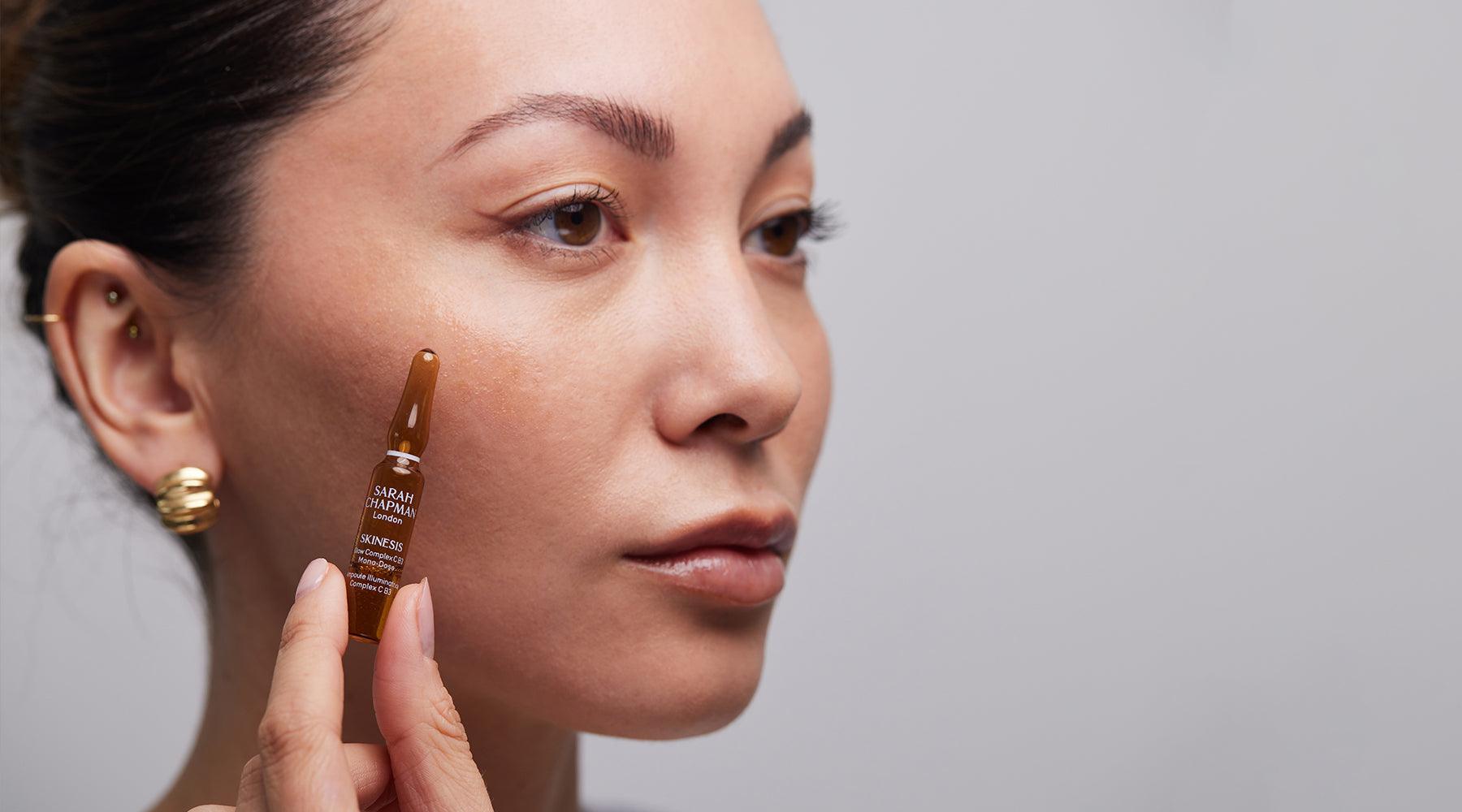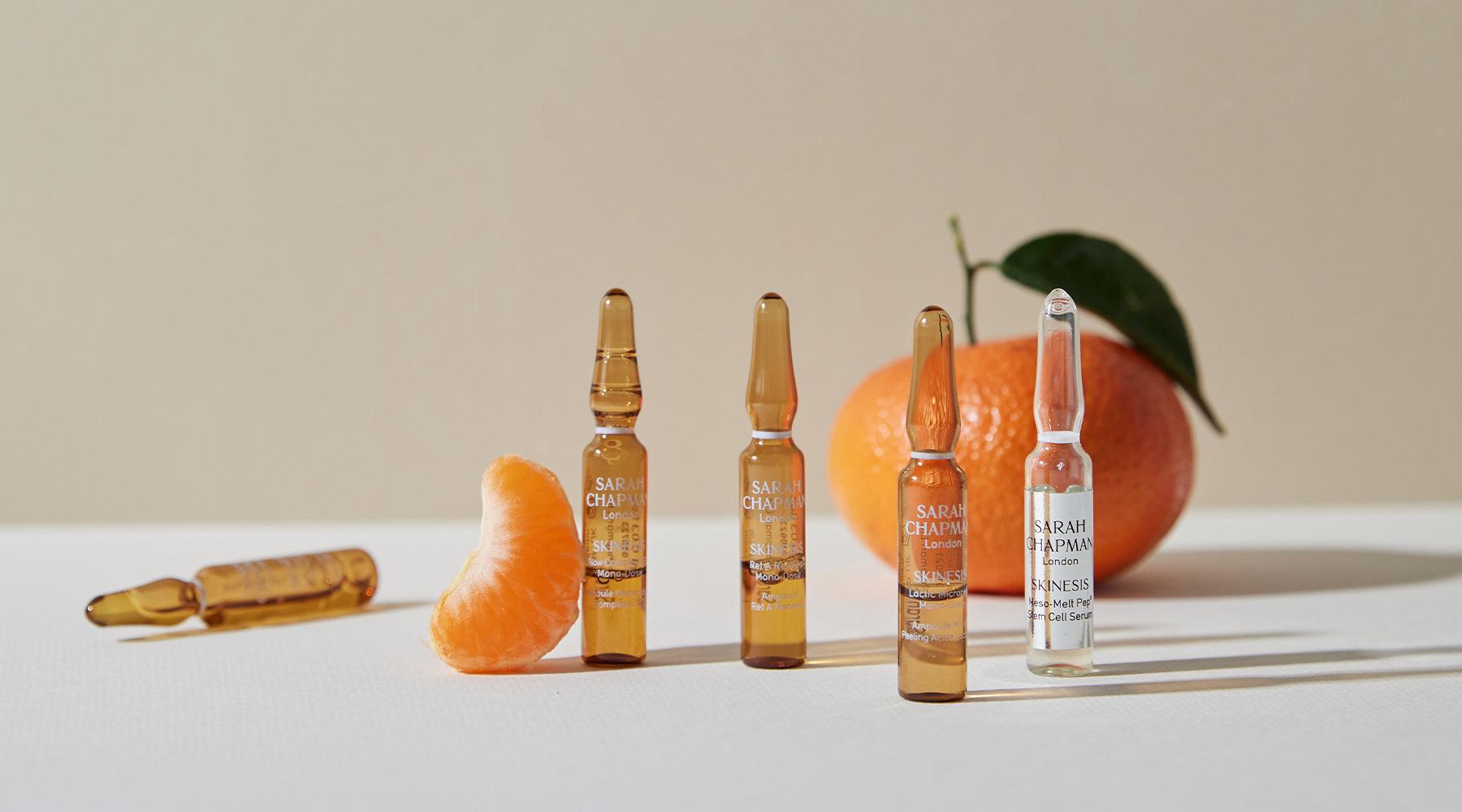
What Is the Difference Between AHA and BHA: Your Guide To Chemical Exfoliants
Acids and acid-based products are the cornerstone of modern skincare, but no two acids should ever be considered the same, and knowing what to use and when is paramount. At Sarah Chapman, we currently most favour lactic acid – a key active of our new Illuminating 5-Day Facial – and salicylic acid.
Chemical exfoliation conducted via any alpha-hydroxy acids (AHAs) and beta-hydroxy acids (BHAs) leaves skin smoother and more even in appearance because its regeneration process can happen more efficiently. Another added bonus? By removing the build-up of dead skin cells, exfoliation makes skin more receptive to subsequent care, allowing for deeper product penetration and, as a result, greater efficacy.
We also know that fine lines, wrinkles and even some scars can be reduced in appearance with the regular use of acids. How is this accomplished? When new layers of skin grow, they follow a ‘template’ of the skin above. By removing the top layers of skin regularly, the scar ‘template’ is reduced and becomes less visible over time.
How Do Chemical Exfoliants Work?
AHAs and BHAs have an important effect on keratinisation, which is detectable clinically by the formation of a new stratum corneum – the top layer of our skin. They appear to modify this formation by encouraging diminished cellular cohesion and weakening intercellular bonding between corneocytes, the predominant cell found in the stratum corneum. By dissolving the ‘glue’ that holds dead skin cells together, chemical exfoliants reinforce the process of cellular renewal, helping skin become smoother and more even in both tone and texture.
AHAs vs BHAs – The Key Differences
While they share some similarities, alpha-hydroxy acids (AHAs) and beta-hydroxy acids (BHAs) essentially differ in structure, solubility and how they act on the skin. AHAs are known to be water-soluble, so they work mainly on the surface of the skin, whereas BHAs have a lipophilic nature, meaning they’re oil-soluble and can penetrate deeper into the pores. This is why they’re ideal for oily or acne-prone skin.
To demonstrate these key differences, let’s take a closer look at two of our favourite chemical exfoliants: lactic acid and salicylic acid.
Lactic Acid (AHA)Brighten // Hydrates // Smooths |
Salicylic Acid (BHA)Unclogs // Refines // Soothes |
|
Water-soluble |
Oil-and-water soluble |
|
Helps improve dullness, uneven skin tone and signs of ageing Also functions as a humectant, drawing moisture into the skin |
Helps improve acne, clogged pores and oily skin Also has powerful anti-inflammatory and anti-bacterial properties |
|
Dissolves the bonds between dead skin cells, promoting cell turnover and stimulating collagen production |
Penetrates the pores to break down the bonds between dead skin cells and dissolve excess sebum and debris |
|
Recommended for dry or sensitive skin |
Ideal for oily, acne-prone and combination skin |
| Find it in: Illuminating 5-Day Facial | Find it in: Rapid Radiance Cleanse |
Choosing Between AHAs and BHAs
Like with all skincare ingredients, selecting between AHAs and BHAs will depend on your own skin goals and concerns. As explained in the table above, AHAs like lactic acid are generally better suited for dry or sensitive skin due to their hydrating properties, while those with oily or acne-prone skin may prefer BHAs, as they can penetrate pores and address excess sebum production.
Some skins, however, will benefit from using both to tackle multiple concerns at once. This powerful combination can also have an impact on the effectiveness of the acids; for instance, by removing dead skin cells and surface debris, AHAs allow BHAs to penetrate deeper and work more efficiently.
To ensure you’re not over-exfoliating your skin, which can cause irritation, we recommend using them at different times and monitoring the skin’s reaction to the acids. Consider, for example, using AHAs in the morning – always followed by a broad-spectrum sunscreen – and BHAs in the evening.



